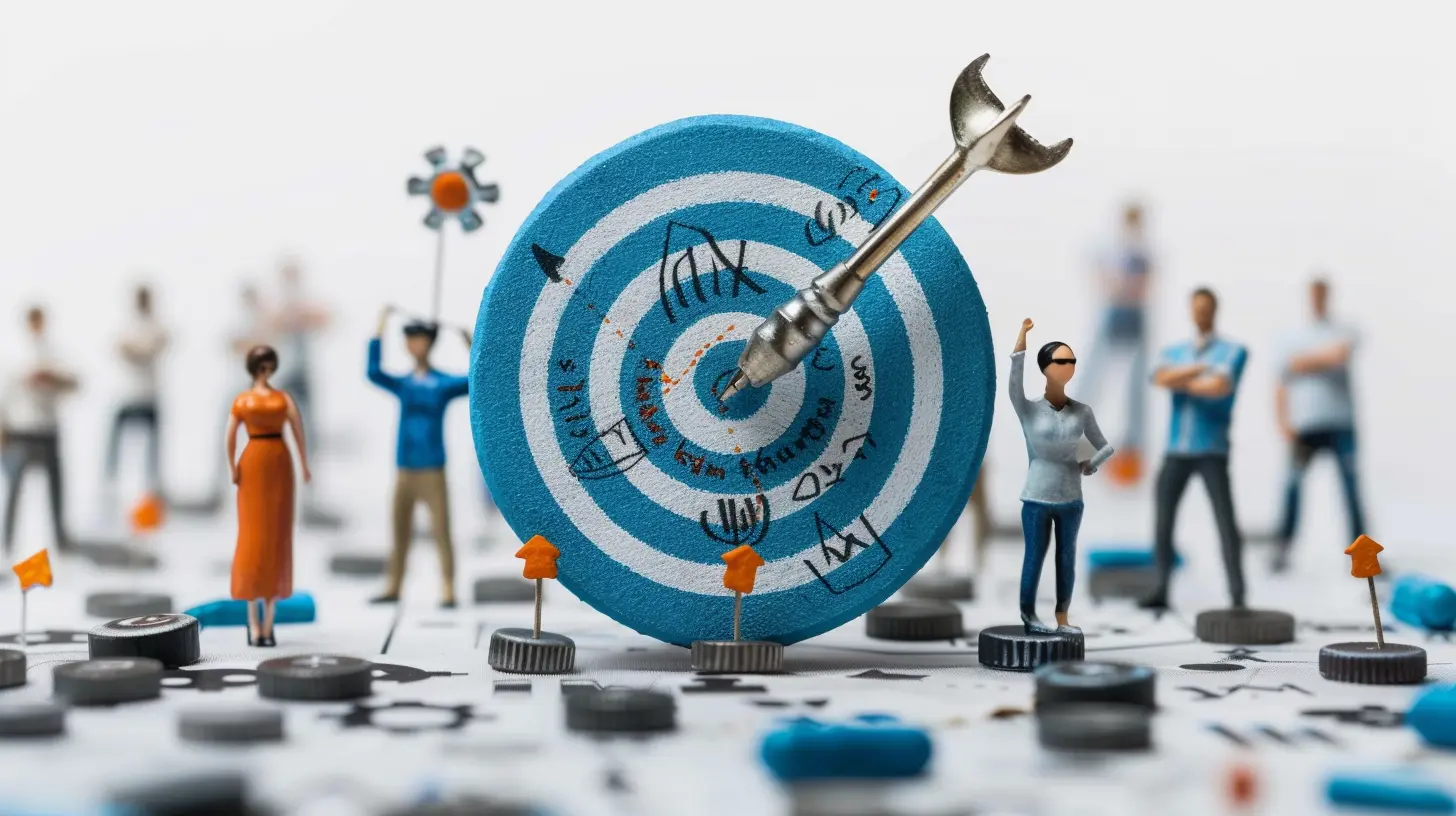How to Build a Strategy Focused on Customer Retention
9 July 2025
Let’s be real for a moment — attracting new customers is exciting. It's like making a new friend or getting that first like on a post. But here's the cold hard truth: while new customers are nice, your current ones are your bread and butter. They’re the ones who already trust you, who’ve already said “yes” to your product or service. So the big question is, are you doing enough to keep them around?
If your business strategy is focused only on acquiring new leads without putting real effort into keeping your current customers happy, then you’re leaving serious money on the table.
Truth bomb: retaining customers is cheaper than acquiring new ones. And not just cheaper — returning customers spend more, are more likely to refer others, and give better feedback.
So let’s dive deep and figure out how to build a rock-solid strategy focused on customer retention — one that’s not some gimmicky patch job, but a long-term love letter to the people who support your brand.
Why Customer Retention Should Be a Top Priority
Before we get into the “how,” let’s talk about the “why.” Why does customer retention matter so much?- It’s Cost-Effective: According to multiple studies, it costs five to seven times more to get a new customer than to retain an existing one. Imagine burning cash just to get someone new through the door — only to watch them leave after a short while.
- Loyal Customers Spend More: Over time, loyal customers tend to increase their spending. They trust you, so they don’t hesitate to try your new products or services.
- Word-of-Mouth Marketing: Happy customers talk. A recommendation from a friend or family member is powerful — and it costs you nothing.
- Feedback for Growth: Returning customers are more likely to give you honest feedback. That’s gold when improving your product or service.
When you shift your mindset from chasing new leads to nurturing loyal customers, everything changes — your messaging, your support, your marketing… even your product development.
1. Understand Your Customers Deeply
Let’s say your customer is in a relationship with your brand (which, in a way, they are). You wouldn’t ignore your partner’s likes and dislikes, right? Same goes here.Start by gathering data:
- Who are they? (Demographics, interests, profession)
- What do they want from you?
- Why did they choose you in the first place?
- What makes them come back — or not?
Use tools like Google Analytics, customer surveys, Net Promoter Score (NPS), and even plain old one-on-one conversations to get inside their heads.
Honestly, the better you understand your customers, the easier everything else becomes.
2. Deliver Consistent and Exceptional Customer Experiences
This might sound obvious, but it’s the foundation of everything. If your customer’s experience is a roller coaster — sometimes great, sometimes awful — they won't stick around.So, what does a great customer experience look like?
- Fast, friendly, and helpful support
- Easy-to-use website or app
- Clear communication
- No hidden surprises (fees, terms, etc.)
- A seamless purchase and delivery process
In short, remove the friction. Make it ridiculously easy and enjoyable for your customers to get what they came for.
Remember, people don’t compare your service to your competitors anymore — they compare it to the best experience they’ve ever had, period.
3. Personalization is Key
Nobody wants to feel like they’re just another transaction. People love being recognized and appreciated. A little personalization can go a long way.Ways to personalize your customer experience:
- Use their name in emails
- Send personalized product recommendations
- Tailor your messaging based on their past behavior
- Celebrate milestones (birthdays, anniversaries, or how long they’ve been with your brand)
It’s the little touches that make customers feel seen and appreciated.
Think of it like this: if someone remembers your favorite coffee order, you’re way more likely to go back to that café, right? Same idea.
4. Create a Killer Loyalty Program
Let’s talk rewards. Who doesn’t love feeling like they’re getting something extra?Loyalty programs are a tried-and-true method to keep customers coming back. But here’s the trick: it needs to be simple and valuable.
Some ideas:
- Points-based system – Earn points for purchases and redeem them
- Tiered rewards – The more you spend, the better the rewards
- Referral bonuses – Bring a friend, get a reward
- Surprise perks – Unexpected freebies or discounts
Make it feel exclusive. Let your customers know they’re part of something special.
5. Communicate Proactively (Not Just When There’s a Problem)
Staying in touch doesn’t mean spamming inboxes. It means adding value with every message.Email newsletters, how-to guides, product updates, sneak peeks — these are all chances to keep your brand top of mind. Just make sure it’s relevant and helpful.
Also, when something goes wrong (because hey, nobody’s perfect), let your customers know before they find out themselves. Transparency builds trust.
Think of this as the relationship check-in. No one likes to be ghosted, right?
6. Ask for Feedback — and Actually Act on It
If you're not asking for feedback, you're flying blind.Make it easy for customers to share their thoughts — good, bad, or in between. Then, here’s the crucial part: show them that you're listening.
Make improvements based on what they’re telling you. Respond to concerns publicly and positively.
When customers see that their input matters, they become invested in your success. It’s no longer just your brand — it’s their brand too.
7. Train and Empower Your Team
You can build the best systems in the world, but if your team isn’t on board, it falls apart.Ensure your customer-facing employees are:
- Well-trained: They should know your product and policies inside out.
- Empowered: Let them make decisions that help the customer.
- Motivated: Recognize and reward employees who go the extra mile.
Your team is your frontline. Treat them well, and your customers will feel it.
8. Keep Innovating
Customer retention doesn’t mean you set it and forget it.Markets evolve. Customer expectations shift. The things that wowed people last year might not cut it today.
So keep pushing. Improve your offerings. Test new ideas. Stay ahead of the curve.
Customers can tell whether you're growing with them or staying stuck in the past.
9. Build a Community Around Your Brand
Want the ultimate level of retention? Create a sense of belonging.When customers feel connected not just to your product but to a larger community, they stick around — and they bring others with them.
You can build community by:
- Starting a private Facebook group for your top customers
- Hosting webinars or live Q&As
- Highlighting user-generated content on your social pages
- Featuring customer success stories
Think of it like a club that your customers are proud to be part of. When they feel like insiders, why would they ever leave?
10. Measure, Rinse, Repeat
You can’t manage what you don’t measure. Track your customer retention metrics religiously.Key metrics to watch:
- Customer Retention Rate (CRR)
- Customer Lifetime Value (CLV)
- Churn Rate
- Repeat Purchase Rate
- Net Promoter Score (NPS)
Use these numbers to fine-tune your strategy. If something’s working, double down. If something’s broken, fix it.
This isn’t a one-and-done job. Think of it like tending a garden — consistent care pays off.
Final Thoughts
Building a customer retention strategy isn’t about flashy sales tactics. It’s about building trust, treating people right, and showing up consistently.Think about your favorite brands — the ones you keep going back to. Chances are, they make you feel like more than just a customer. They make you feel valued.
That’s the goal here.
You don’t need to be perfect. You just need to care — and show it.
Start small. Pick one or two things from this guide and start implementing them today. Over time, your customers will notice. And they’ll stick around, not because they have to… but because they want to.
And there’s nothing more powerful than that.
all images in this post were generated using AI tools
Category:
Business StrategyAuthor:

Ian Stone
Discussion
rate this article
1 comments
Antonia Mitchell
Building a customer retention strategy? Think of it like a long-term relationship: don’t just woo them with fancy gifts—remember their birthday, listen to their rants, and occasionally make them laugh. Because let's be honest, nobody wants to date someone who only texts back when they want something!
July 30, 2025 at 3:17 AM

Ian Stone
Absolutely! Building strong customer relationships requires ongoing engagement, genuine communication, and thoughtful gestures that go beyond transactions. It’s all about treating them like valued partners!


